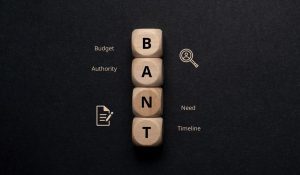
Every B2B sale begins with leads. However, generating leads is a tough nut to crack and demands some real careful consideration. Navigating from the initiation of the B2B demand generation funnel to the final purchase decision can be a complex and obstacle-laden journey. Therefore, mastering the art of recognizing and cultivating your leads can significantly impact the success of your business.
As a start, you can choose to take the ‘Kaizen’ approach and cut down on wasted efforts by properly categorizing your prospective clients. Yes, it’s crucial! To guarantee that time and resources are allocated appropriately, it is necessary to categorize your B2B sales leads into various subcategories. Doing so will result in a seamless sales journey for you and quicken your conversions.
Are you keen to find out how to convert your leads more efficiently?
To begin, let’s examine different types of B2B sales leads that B2B lead generation companies need to identify, target, and convert!
IN THIS BLOG
Know Your B2B Sales Lead Type!
B2B sales lead types are divided into cold leads and hot leads based on your prospect’s level of response or the number of interactions with your business. Your sales lead funnel can be differentiated to optimize results. As mentioned earlier, lead categorization is important in B2B sales.
Every lead category is unique and so are the methods used to nurture them. While some leads may convert to ‘closed wons’ more quickly, others may take longer to yield positive closures.
There’s no one-size-fits-all strategy for lead conversion. A ‘cold lead’ may stretch out your sales cycle, until it turns into a ‘warm or hot’ lead but with the right prospecting strategies!
#1 Cold leads
When a raw lead is scrubbed for basic contact information it turns into a cold lead. In the B2B lead creation process, cold leads are denoted by those who have shown zero interest in your business and have not accessed your business website.
Hence, these groups of leads are the hardest to convert! This means that at the beginning of the voyage, your warm and hot leads were previously cold. Whether they advance more quickly through the sales funnel or remain cold indefinitely depends on the sales techniques you employ.
Cold leads are at the top of the sales funnel, so converting them to prospects takes the most time and effort. Since they are unfamiliar with your service, you must grab their attention smartly. Here’s how:
Winning Over Cold Leads – The Techniques!
Cold emails: Utilizing cold emails stands out as a highly effective B2B lead generation strategies, offering a valuable means to enhance prospects’ brand recognition when crafted skillfully.
- Keep email subject lines and bodies brief and to the point
- Provide your cold leads value such as a free research report that would pique their interest in your business
- Try using the one-time discount strategy to get them to buy into your offer or ask them for referrals!
Salesloft reports cold email personalization has been known to boost response rates by 112%. Before writing your email, don’t forget to investigate everything about your receiver.
Cold calls: Many firms are still determining how to start B2B sales lead prospecting from scratch! Well, start with an email, then wait for your leads to read it, before calling them. Establishing a connection will be possible, more so when your lead is familiar with your business.
#2 Warm leads
Warm prospects are those who have visited your website or demonstrated interest by responding to your email! They are those who follow your business page on social media and subscribe to your monthly newsletter.
Warm leads willingly provide their contact details and possess knowledge about your products and services. To excel in lead enrichment, executing the appropriate strategic actions is essential.
Remember warm leads have passed the stage of cold leads and are now prepared for nurturing. They are easier to manage than cold leads!
Winning Over Warm Leads – The Techniques!
By responding to your surveys, emails, or phone calls, warm leads have already shown interest in your organization and revealed their problem areas. You may use the following tactics to distinguish yourself from your competition and satisfy client queries:
- Personalized content: Target warm leads with customized B2B content, including landing pages, blog posts, and B2B email marketing, which influences prospective clients’ purchasing decisions. The ‘how our product can work better for your business returns’ or ‘how we can solve your business conundrum’ pitch can work well in your favor! So, try personalizing emailers this time around and drive follow-up calls to win warm leads over!
- Clients’ testimonials: Prospects always want to know what their peers think about the product or service they are going to opt for! Your positive customer reviews or case studies can improve your business credibility in this context.
Another tip is to make sure that when your sales rep goes on call, he or she is well-equipped to answer the ins and outs of your product or service so that the prospect is convinced of your competency.
Netting the Prospects: Cold vs. Warm Leads
Understanding B2B lead generation companies working and establishing a robust outbound strategy to engage diverse lead segments is key. The effectiveness of lead nurturing varies by the buyer’s journey stage.
Remember when you haven’t showcased your worth or forged a relationship, cold leads can remain way out of your reach. Warm leads on the other hand can be delicate to deal with— don’t overload them with information or leave room for competition in this case!
#3 Hot leads
Every business seeks hot leads since they are more quickly converted into sure sales. Hot leads are the most ideal prospects since they are interested in your product or service and need your business to help them out! Hot leads indicate that your business has done an excellent job at campaign customizations, capturing their interest and establishing rapport.
Hot leads are also qualified leads, as they satisfy all the requirements to become customers. Sales development representatives (SDRs) can use various lead-qualifying techniques to separate qualified leads from unqualified ones during outreach.
Diverse cues and commonly utilized methodologies like the Budget, Authority, Needs, and Timeframe (BANT) Framework, the CHAMP Enterprise Sales Methodology, and the Authority, Need, Urgency, and Money (ANUM) approach are employed for the recognition of qualified, high-potential leads.
Conclusion
In different types of B2B sales leads, hot leads are often the most valuable and likely to convert, demanding minimal conversion efforts. Nevertheless, it’s crucial to prioritize other lead categories that possess the potential to transform into hot leads and drive conversions.
To effectively pitch to cold and warm leads, it is essential to know their business requirements, product needs, and workflow challenges. B2B lead generation services support your organization in efficiently converting leads and achieving maximum return on investment.
To access efficient lead conversion strategies, connect with Binary Demand.











